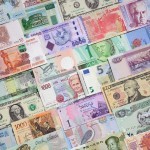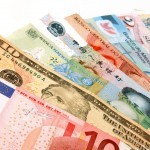Forex Technical Analysis for the Forex Challenged – Udemy

Predicting where the market will go is not an easy task but some make it their living. Predicting the price movements and future trends of the foreign exchange market can sound even more daunting to the beginner trader. Forex technical analysis involves just this type of predicting and doesn’t have to seem intimidating. Once you develop the necessary well of knowledge, you can take off in the world of foreign markets.
Learn the basics of Forex trading here.
What is Forex?
Forex is the short version used to refer to the foreign exchange market. The foreign exchange market involves trading done by investors and speculators. For example, let’s say the U.S. dollar is expected to weaken in value relative to the euro. A forex trader in this situation will sell dollars and buy euros. If the euro strengthens, the purchasing power to buy dollars has now increased. The trader can now buy back more dollars than they had to begin with, making a profit.
This is similar to stock trading. A stock trader will buy a stock if they think its price will rise in the future and sell a stock if they think its price will fall in the future. Similarly, a forex trader will buy a currency pair if they expect its exchange rate will rise in the future and sell a currency pair if they expect its exchange rate will fall in the future.
The Exchange Rate
The foreign exchange market is a global decentralized marketplace that determines the relative values of different currencies. Unlike other markets, there is no centralized depository or exchange where transactions are conducted. Instead, these transactions are conducted by several market participants in several locations. It is rare that any two currencies will be identical to one another in value, and it’s also rare that any two currencies will maintain the same relative value for more than a short period of time. In forex, the exchange rate between two currencies constantly changes.
Let’s Dig into Forex Technical Analysis
Technical analysis is a method of predicting price movements and future market trends by studying charts of past market action. Forex technical analysis is concerned with what has actually happened in the market, rather than what should happen and takes into account the price of instruments and the volume of trading, and creates charts from that data to use as the primary tool. One major advantage of forex technical analysis is that experienced analysts can follow many markets and market instruments simultaneously.
Technical analysis is built on three essential principles:
Market action discounts everything This means that the actual price is a reflection of everything that is known to the market that could affect it, for example, supply and demand, political factors and market sentiment. However, the pure technical analyst is only concerned with price movements, not with the reasons for any changes.
Prices move in trends. Technical analysis is used to identify patterns of market behavior that have long been recognized as significant. For many given patterns there is a high probability that they will produce the expected results. Also, there are recognized patterns that repeat themselves on a consistent basis.
History repeats itself. Forex chart patterns have been recognized and categorized for over 100 years and the manner in which many patterns are repeated leads to the conclusion that human psychology changes little over time.
Tools for Forex Technical Analysis
Forex charts are based on market action involving price. The following are tools for forex technical analysis:
Relative Strength Index (RSI): The RSI measures the ratio of up-moves to down-moves and normalizes the calculation so that the index is expressed in a range of 0-100. If the RSI is 70 or greater, then the instrument is assumed to be overbought (a situation in which prices have risen more than market expectations). An RSI of 30 or less is taken as a signal that the instrument may be oversold (a situation in which prices have fallen more than the market expectations).
Stochastic Oscillator: This technical tool is used to indicate overbought/oversold conditions on a scale of 0-100%. The indicator is based on the observation that in a strong up trend, period closing prices tend to concentrate in the higher part of the period’s range. Conversely, as prices fall in a strong down trend, closing prices tend to be near to the extreme low of the period range. Stochastic calculations produce two lines, %K and %D that are used to indicate overbought/oversold areas of a chart. Divergence between the stochastic lines and the price action of the underlying instrument gives a powerful trading signal.
Moving Average Convergence Divergence (MACD): This indicator involves plotting two momentum lines. The MACD line is the difference between two exponential moving averages and the signal or trigger line, which is an exponential moving average of the difference. If the MACD and trigger lines cross, then this is taken as a signal that a change in the trend is likely.
Number Theory – Fibonacci numbers: The Fibonacci number sequence (1,1,2,3,5,8,13,21,34…) is constructed by adding the first two numbers to arrive at the third. The ratio of any number to the next larger number is 62%, which is a popular Fibonacci retracement number. The inverse of 62%, which is 38%, is also used as a Fibonacci retracement number.
Gann Numbers: W.D. Gann was a stock and a commodity trader working in the ’50s who reputedly made over $50 million in the markets. He made his fortune using methods that he developed for trading instruments based on relationships between price movement and time, known as time/price equivalents. There is no easy explanation for Gann’s methods, but in essence he used angles in charts to determine support and resistance areas and predict the times of future trend changes. He also used lines in charts to predict support and resistance areas.
Waves – Elliott wave theory: The Elliott wave theory is an approach to market analysis that is based on repetitive wave patterns and the Fibonacci number sequence. An ideal Elliott wave patterns shows a five-wave advance followed by a three-wave decline.
Gaps: Gaps are spaces left on the bar chart where no trading has taken place. An up gap is formed when the lowest price on a trading day is higher than the highest high of the previous day. A down gap is formed when the highest price of the day is lower than the lowest price of the prior day. An up gap is usually a sign of market strength, while a down gap is a sign of market weakness. A breakaway gap is a price gap that forms on the completion of an important price pattern. It usually signals the beginning of an important price move. A runaway gap is a price gap that usually occurs around the mid-point of an important market trend. For that reason, it is also called a measuring gap. An exhaustion gap is a price gap that occurs at the end of an important trend and signals that the trend is ending.
Trends: A trend refers to the direction of prices. Rising peaks and troughs constitute an up trend; falling peaks and troughs constitute a downtrend that determines the steepness of the current trend. The breaking of a trend line usually signals a trend reversal. Horizontal peaks and troughs characterize a trading range.
The foreign exchange market technical analysis is driven by concentrating on the activity of that instrument’s market. It isn’t concerned too much with any of the larger factors affecting that market. Predicting can be fun if you know what you’re doing!
You may also like…
Share Trading Tips For BeginnersTrading Tips for Beginner Traders that Can Help You Protect Your CapitalThe Best Forex Strategy Based on Technical Analysis How the Stock Market Works: A Beginner’s Guide Forex Scalping: Risk In The Foreign Exchange MarketThe Best Forex Trading Platform for the BeginnerCurrency ETF: Investing in Currency Exchange-Traded FundsIntraday Trading Tips: Understanding the Basics
Continue reading:
Forex Technical Analysis for the Forex Challenged – Udemy
See which stocks are being affected by Social Media








